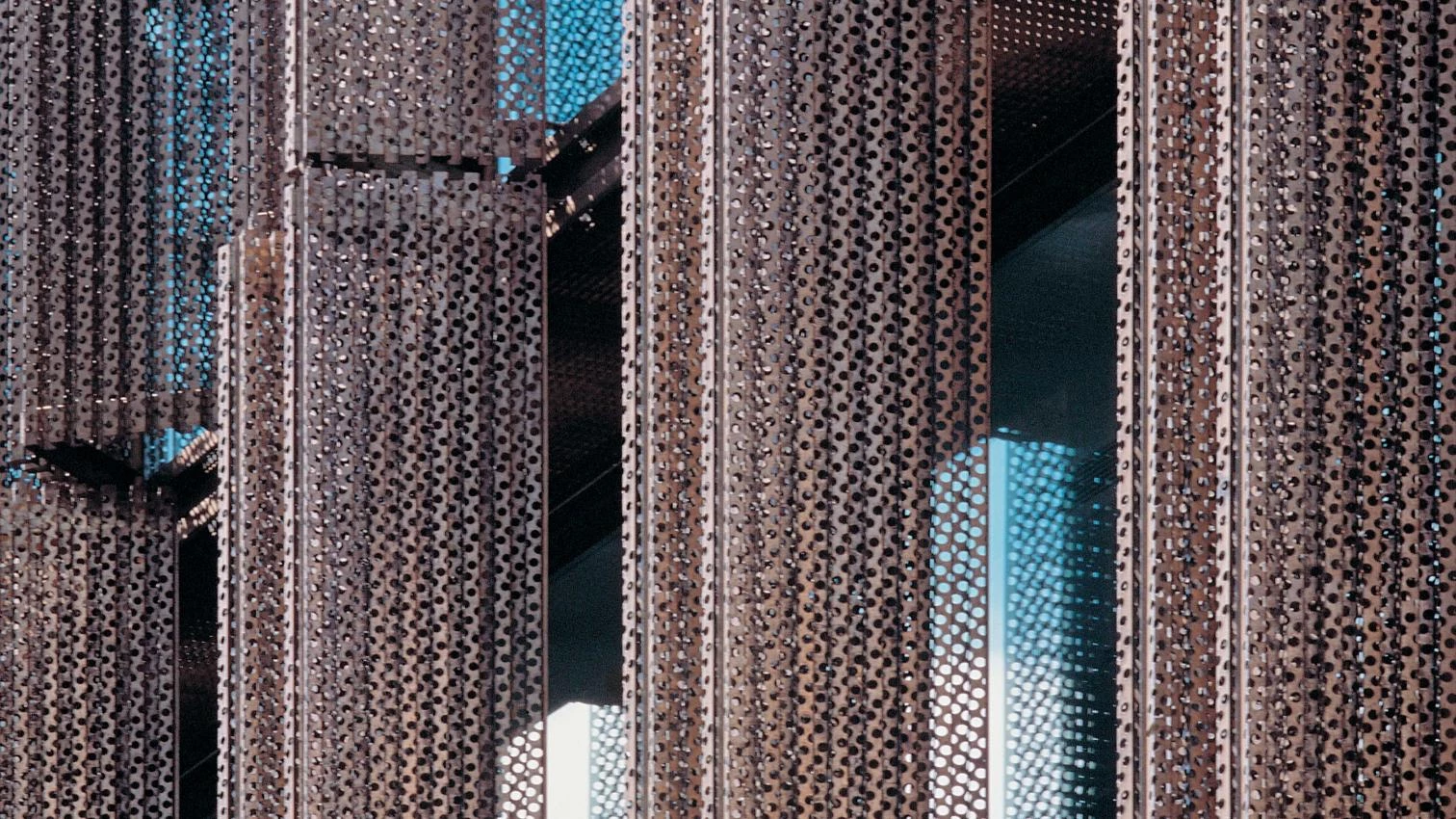
Metal is the material of industry. Smelted, rolled, hardened, and polished, metal is like a parallel of glass and like its antimatter: resistent and opaque, but sensitive to water and air. As if to please a postmodernity interested in superficial attributes, glass lost its transparency, and metal its protection. In demand now are opaque glass and rusted metal. Inert materials like aluminum and stainless materials like steel alloys, formerly musts in facades, have given way to oxide, patina, and verdigris. Such chemical decomposition likens metal to wood and endows the metallic building with a sensitive skin. In turn, the inalterable materials are appreciated for secondary attributes such as gloss, reflections, or the sharpness of their sheets.
The sheets render the buildings more abstract. Neither windows nor walls, they are, simply, metal planes. And the sheets that allude neither to their industrial origin nor to their montage, but instead to their grain and patina, are even more abstract – planes of precious textures. To modern architects, metal sheets seemed a bit too, insignificant, so they surrounded them with the building’s structure; in contrast, postmoderns like the sheet hiding the skeleton and revealing its fragments. But the ideal building would be like a ship: the sheet deprived of a continuity problem. Or like a snake: scales of metal...[+]





